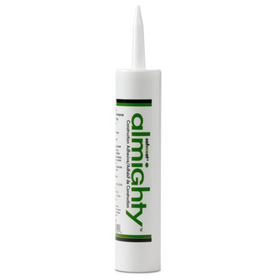
Sustainability Pioneer Designs a Home to Suit
Last Updated: Mar 17, 2025Sustainability is Darcy Hitchcock's life. She's the founder of the Sustainability Alliance, a coalition of regional non-profits. Before that, for 23 years, she was president of a management consulting firm specializing in sustainability. Moreover, she co-founded the International Society of Sustainability Professionals.
Table of Contents
- Designing to the Site
- ICF and Sustainable Systems
- An Earthworks System
- Lessons Learned

She has written ten books, including the award-winning The Business Guide to Sustainability. Hitchcock also taught in the Bainbridge Graduate Institute's Sustainable MBA Program. After moving with her husband, Dale Graham, and their dogs, from Portland, Oregon, to Northern Arizona in 2013, Hitchcock settled into a condo. The family soon discovered, however, that they needed one more bedroom. Plus, the condo didn't align with their sustainability values.
They began their search. The couple wanted to stay in the same neighborhood in the Village of Oak Creek, in part because the homeowners association (HOA) included membership to an adjacent fitness club and spa they enjoy. "Beyond that," Hitchcock says, "we needed solar access, meaning a southern exposure so that we could design a passive-solar house. It would be stupid not to. It's free energy."
I feel I have to earn my place on this crowded planet
Darcy explains. "If you're building new, it helps to have a set of priorities. I had four: climate change, energy, water, and fire. Obviously, in the Southwest, they are all interconnected."
Designing to the Site
After finding a lot, Hitchcock set to work designing a 2,225-square-foot sustainable home for the family. "Because of the lot's topography, I needed a long thin house with a garage on one end, the master bedroom away from the spa parking, and most of the living space to the south for solar access," she says. "I started with a plan that met those criteria." She hired a local builder interested in sustainability. His designer helped finalize the plans.
Hitchcock also divided the lot into sections according to functionalities. "The lot is rectangular," she explains, "so the north part is in the front yard. The second quarter is the house. The third quarter is the back patio, which we fenced off so the dogs can run around but not get into the fourth area, intended for food production. Otherwise, one of our dogs would stand on her back legs and eat my raspberries!"
There are two natural wildflower areas. "I felt horribly guilty about taking another chunk of land away from nature," she adds. "I wanted to give as much of it back as I could. A strip along the south wall in the fourth section is all pollinator plants." There's also a big, natural area in the front. "When you grade the land, you end up with a lot of fist-sized rocks. We raked those into one area and gave it a nice edge, and on dog walks, I'd gather wildflower seeds that I tossed in there. We now have wildflowers blooming from spring to fall."
Hitchcock also successfully estimated how much overhang she'd need for solar heat gain in the winter and shading in the summer. "I put the sunroom in the middle of the house, and had to guess how much overhang we should have, and it turned out about perfect. In the middle of the summer, we get about half-an-inch of sun in the room. In the winter, the sunlight reaches beyond sunroom deep into the house."

ICF and Sustainable Systems
Hitchcock and Graham considered rammed-earth and straw-bale construction but nixed both ideas because of the HOA. They also considered aerated concrete blocks that the Navajo were making with fly ash from their coal-fired power plant. The couple decided the thermal mass of the ICFs made with recycled styrofoam from a Phoenix company was a better and more sustainable product.
Called EF Block, the ICF includes 87 percent recycled material. It's also fire resistant to 2,300 degrees, and therefore met one of Hitchcock's four main priorities. "The manufacturer takes recycled styrofoam that's been used as packaging, breaks it up into little pieces, and mixes it in a slurry of cement," she explains.
"They build it like a series of Lego blocks," she adds. "They stack the blocks, insert rebar, and pour in the concrete." One drawback? "If you want to hang something on an exterior wall, like a flat-screen television, it's hard to find the concrete. We used special hangers for the cabinetry in the kitchen."
A grid-tied 20-panel solar array on the roof provides all they need for their energy-efficient house. The home averages 12 kWh per day versus 32 kWh per day for the average Arizona home, which includes the HVAC and charging their Chevy Volt. The only thing that isn't electric is a natural gas fireplace, which the couple uses sparingly on winter mornings.
A geothermal system with a heat pump takes care of heating and cooling. "My original idea was to have heating and cooling in the floor because I've heard how wonderful that is," Hitchcock says. "But I was told cooling might lead to condensation on the floor. Also, when my husband looked at the boiler system and pipes necessary to do subfloor, hydronic heating, it seemed like a big risk to have all of that water going through the house. It was much easier to make the home all-electric and put up solar panels."

An Earthworks System
There are three integrated rainwater systems. The first, referred to as earthworks, involves shaping the land to where you want it. Traditionally, construction methods drive stormwater away from the house "and into the storm sewer system as fast as possible," she says. "Instead, we're keeping it on site."
The water off the north side of the house drains into a series of catchment basins on the south side, used to water the fruit trees. "I was inspired by a conservationist in Africa who said, 'First you plant the water; then you plant the tree." Initially, she planted a fruit tree in the bottom of each of the basins, but discovered most didn't like being underwater during heavy rains. "I lost some trees," she says, "so if I were to do this again, I'd plant them between the basins."
The house also captures gray water, which includes wastewater from the shower, bathtub, and washing machine. That water also goes to the fruit tree basins.
There's also a 2,000-gallon underground rain tank that captures the water off the south side of the house. That water is used for drip irrigation, mostly in the patio. "Mulch is another important rain collection system people don't think about. I need a bumper sticker that says, 'I break for tree trimmers'! Whenever I see an arborist chipping wood, I ask if they want to drop some off. In the back patio, Hitchcock planted colorful, drought-tolerant flowers, including roses, salvia, and Mexican petunias.
Lessons Learned
In addition to discovering that fruit trees don't like standing in water, Hitchcock says she also learned some valuable lessons while designing, building, and living in her sustainable home. "Geothermal can be retrofitted to existing forced air systems," she says. She wishes they'd included spray insulation, and that all of the exterior doors had overhangs.
The couple was also required to put in a sprinkler system, "even though there's a hydrant about 30 feet away," she says. "The rate structure of our water company includes a base charge that's three times that of a typical home, because of the size of the line needed for the sprinklers. That hurts."
Hitchcock also has a wish list, now that she's lived in the home. One is rainwater catchment basins with filters. When the rainwater comes off the roof, it's first captured in small, square catchment boxes that direct the water into the pipe to the rain tank. "Since the pipe comes out about two inches above the bottom, we sometimes end up with skanky smelling water there, a nice mosquito breeding ground," she explains. "I put in some bricks to displace some of the water and dribble a little bleach in there after rains until it evaporates."
Another item on her wish list is anti-bird-strike glazing. "Really, after all these years, we can't make a window that birds can see?" she asks rhetorically. When the couple put feeders up opposite their windows, they had a number of bird strikes. "We tried UV stickers and hanging metal artwork. I even strung feathers on fishing line since I'd read that helped. My husband wasn't too wild about those!" Eventually, they discovered moving the feeders off to the sides of the home, not opposite any windows, did the most good.
Third on her list is a durable but low-VOC sealer for the concrete floor. "The floor looks lovely and is easy to clean," she says, "but the sealer, even though it contained nasty, off-gassing chemicals, scratches easily. You can see dog skid marks everywhere. It would be nice to have a strong finish that didn't stink for days after it was applied."

The house has won awards and been featured in local publications. Still, Hitchcock says, "This should just be standard practice," of the sustainable construction, energy, and water-catchment systems the project includes. "You don't have to be a genius to design and build this way. I don't have a design degree, so if I can figure this stuff out, then I really believe anyone can and should be doing this."
Camille LeFevre
Camille LeFevre is an architecture and design writer based in the Twin Cities.










